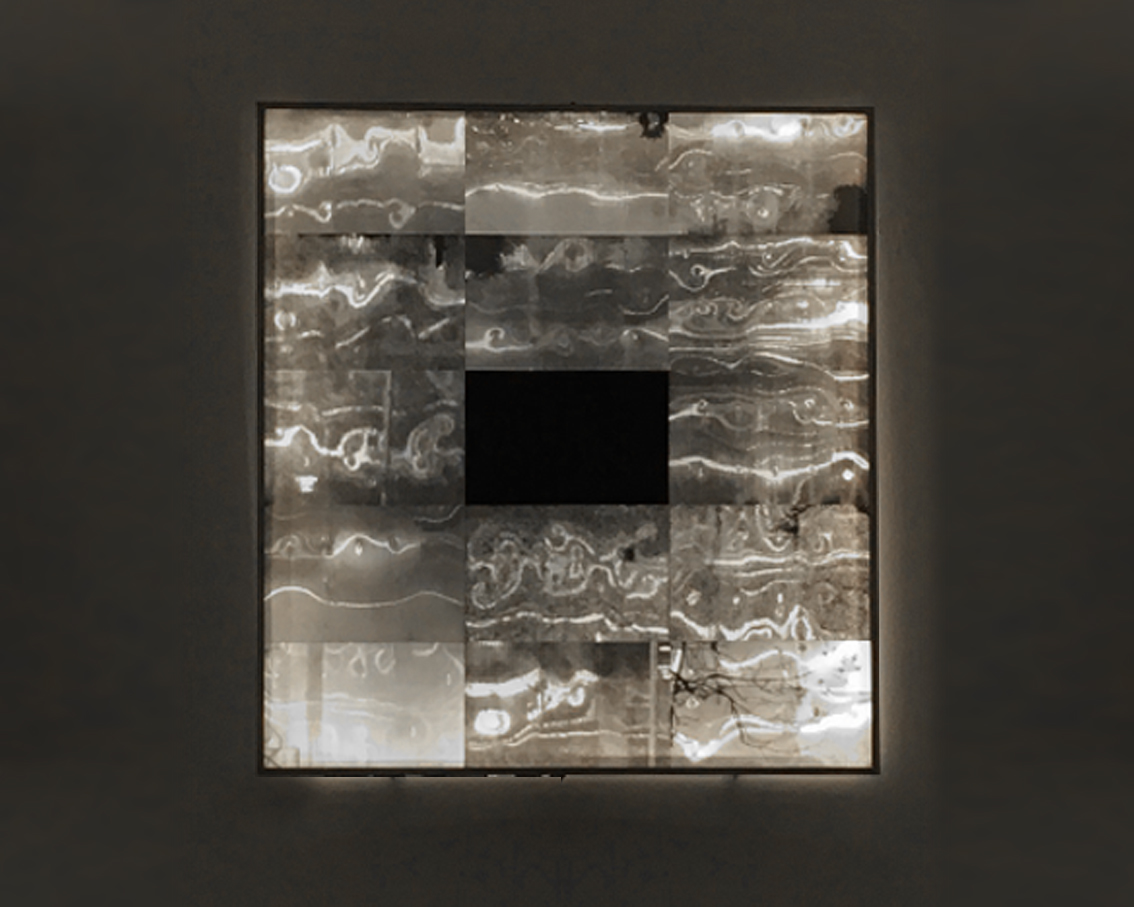The creative aspect of chaos consists in its rich
potentiality, complexity taking form of various perceptive
forces discerned in the picture. Rudolf Arnheim
points out that people are attracted and feel
a compelling need to surround themself with understandable
forms (which I call an instinct of form),
to such an extent that we make up for the lack of
information in order to come up with coherent object
that we can observe. This is why it is even more
interesting to contemplate an object that is not of
figurative nature, where the need to define shows
personal, internal attachment. Our imagination creates
numerous interpretations, which may result in
the need to translate them. Internal reorganisation
and multiplicity are transformed through synthesis,
which it is possible to define. When we try to make
sense of aesthetic sensations, it becomes possible
to interpret the lack of form.
KONDENSAT CHAOTYCZNY
Twórczy aspekt chaosu polega na jego bogatej potencjalności,
złożoności, pojawiającej się pod postacią
różnorakich sił percepcyjnych dostrzeżonych na
obrazie. Rudolf Arnheim zauważa, że ludzi pociąga
nieodparta potrzeba otaczania się zrozumiałymi
formami (ja to nazywam instynktem formy), do
tego stopnia, że nadrabiamy braki obserwowanych
kształtów aby uzyskać koherentny obiekt obserwacji.
Tym bardziej interesującym jest kontemplacja obiektu
nieprzedstawiającego, gdzie potrzeba dookreślania
ujawnia osobiste, wewnętrzne przywiązania
do formy. Wyobraźnia sama tworzy
rozliczne interpretacje, stąd być może wypływa
potrzeba ich translacji. Wewnętrzna reorganizacja
i wielorakość przechodzą w syntezę, którą można
nazwać. W momencie, kiedy tłumaczymy sobie wrażenia
estetyczne, bezforemność zyskuje interpretację.
